WHEN Geoff Seddon became editor of Street Machine in 2000, the magazine was almost 20 years old. It was still a great thing, but was in need of a reboot. The mag was still only coming out nine times a year and the sales weren’t what they could have been. Although he’d been a car guy since birth, ‘Seddo’ was no expert. What he was good at was magazines, and thank Christ for that! With Geoff at the helm, SM got a serious injection of investment, enthusiasm and talent, driving sales through the roof and setting a template that we still follow today.
What came first for you, Seddo – cars or motorbikes?
I was into cars from when I could breathe, I reckon. My dad was into cars and all my mates were. Then the motorbikes came a bit later, but I guess they’ve both been around the whole way through.
These days, any kid fresh off his Ps can buy a factory V8 or turbo-six second-hand that makes almost 400hp. What was the raw material when you were a young ’un?
I always thought I was pretty lucky to have grown up when I did. I got my licence in 1972. Everybody was into cars; like, everybody. A lot of it was Holdens and Fords, mostly six-cylinder, but we all modified them. It was just what everybody did. And even if you had no money, the cheap cars were the cool cars. I remember I had an EK wagon that cost me 200 bucks, which wasn’t even much money then. And it was a bloody great car. It wasn’t very fast, but it was cool. I think I owned just about every Holden from EK through to HJ. I had an HK Monaro GTS that cost me a thousand bucks. It was a six-cylinder one. The V8s were quite a bit more expensive.
When did you get into bikes?
Back in the 70s, every kid had a dirt bike. And my dad, he encouraged me with the cars; he hated road bikes. So I had to wait ’til I left home. And I started with a GT750 Suzuki. Those were the days when you could start on any size bike. To get your Ps, they just got you to ride around the block, and if you weren’t bleeding too much when you came back, they gave you your licence. It’s amazing any of us survived. But also, there wasn’t the same amount of traffic around. They were more laidback times and the bikes weren’t as fast as they are today.
GT750 sounds fast to me.
It kind of was, but I wasn’t really into performance so much in those days. I used to just try and do 100 miles an hour on each of my bikes once, and then I’d never go anywhere near there again. I bought a Ducati 900 SuperSport in 1982, and that was a whole different ball game. It loved 100 miles an hour. I was probably still in fourth gear. The thing could do 200km/h easy, and stable. So life changed a bit.
What magazines were you reading as a young bloke?
I devoured motorcycle magazines, anything I could get. There weren’t that many around. Ozbike was a bit of a watershed moment. That was the first lifestyle magazine; it wasn’t just about the bikes. It was Harley-oriented, but it was about the lifestyle around motorcycles. And that’s where I got my first stories published in the late 1970s, early 1980s. Then I got some fiction published in Two Wheels and magazines like that.
What about car mags?
I was a big fan of Van Wheels; that was a fantastic magazine. I liked the naked girls. And, of course, everyone was into panel vans. Panel vans were just so popular in the 70s; everyone wanted one. I think partly because life was changing. Contraception was around, so there was a lot more sex happening amongst unmarried people, but living together outside of marriage was less common, so that’s why panel vans were so popular. And I guess from there, I got into Street Machine and into the car mags.
When did it turn into a real job?
I always thought: ‘Wouldn’t it be a great job to work on a magazine?’ I started testing bikes from the mid-80s for Two Wheels and started full-time in 1988. It was a difficult time financially. I had quite a good job at Tooheys Brewery. I was in a management position there, earning lots of money. But I was testing bikes on the weekend, which was putting a strain on my marriage. We had a lot of young kids. Luckily I married very well and Stephanie said, “Well, you’re the one who has to go to work every day, so you might as well do something that you like.” I couldn’t believe when she said that. I went from wearing a suit to work to wearing jeans and a T-shirt. My whole life changed and I just loved it. Loved it ever since. My first regular mag that I ever edited was in 1990, a magazine called Performance Street Bike for Federal Publishing, which was a copy of Street Machine – I was fully into Street Machine then. It was all about modified bikes – short, three- and four-page stories. We also incorporated a bit of the lifestyle stuff from Ozbike. So that’s what an impact Street Machine had on me all those years before. So when I got to Street Machine 10 years later, I copied the copy, if you like.
Journalists and magazine editors come from all kinds of backgrounds. Your training is in accounting and industrial relations, which to my mind is the perfect skillset to be an editor.
I think it is. When I started full-time at Two Wheels, the editor was a guy called John Rooth, who went on to become a legendary four-wheel drive journo. John is a close friend to this day. But we figured we were a good match for each other. John’s approach was that you could put anything in the magazine. You didn’t have to follow a format, you could do different stuff. And he had a great style of talking with the reader rather than at the reader. But he appreciated my background in business. And so between us, we were a pretty formidable team.
Did you ever go out on your own?
After Performance Street Bike, I started my own magazine called Performance Cycles, but it didn’t last. I was looking through it the other day, the four copies that we did, and it actually made me realise I’ve been doing the same magazine for the past 30 years. I just changed the content.
Where did you go after that?
I went to work on The Picture magazine, under a guy called Brad Boxall. At the time it was selling about 150,000 to 160,000 copies a week. It peaked after I left at close to 200,000 copies a week. I asked Brad what the secret was, and he said, “Just surround yourself with geniuses, and play the long game.” That’s held me in good stead. After The Picture, I was founding editor of Ralph. That’s when I thought, “Gosh, this is the pinnacle of my career.” But I learned a few harsh lessons at Ralph. When we started, it was going to be a much more blokey mag. Actually, the title we were going to call it was Burnout. So it was kind of like the English lad mags, but where they had soccer as a focus, we thought, what’s the Australian focus? What’s the equivalent here? And we thought: Cars. So we had this great mag planned around cars, but as we were developing it, the suits decided to make it more of a fashion, upmarket magazine like FHM. So I went from being the ideal guy for the job to the worst guy for the job. But I learned some lessons there, which I put to good use when I got to Street Machine.
What happened after Ralph?
I had a few years in the wilderness, part of which was spent helping Mark Hanna at Street Heat, which was my first exposure to the organised car scene. I’d been into cars all my life, but I’d never been to Summernats. Through Mark I went to Springnats in Shepparton. I remember going there the first time and it was the first time I’d seen an organised burnout competition. And there’s this guy, this guru there. He was like Peter Brock. It was Gary Myers, of course. And I thought, “You people outside this scene have never heard of Gary Myers, but he is such a legend within the scene and a mentor to the younger guys.” Peter Gray was the same.
How did the Street Machine gig come about?
Purely by accident. I thought with all the experience I’d had, if I got the Street Machine job, I thought I could have a real crack at this. I figured I’d learned all the good lessons by then – it’s content, it’s delivery, it’s also how to handle the suits. You are allowed to tell them to get f–ked, but you don’t do it all the time.
What did you find on your first day?
Street Machine was a bit down on its luck at the time. The company didn’t regard it well. We were at an office out at Epping, as you recall, with Wheels magazine. And there was Street Machine, out the back, behind the toilets. And the view was, “Oh, they’re all bogans.” “Knuckle-draggers” was the word they used to use for our readers. I hated that shit. It really got my goat. I did have a mullet and I did wear flannelette shirts and I always liked old Holdens. So that was a real motivation for when I got there, to change that perception, and to get a bit more respect for it within the company and outside, too.
I guess at that point Street Machine was like a car that had a bit of rust and needed a new paintjob.
That’s a really good analogy. It did need a freshen-up. It was a bit straight, didn’t take too many risks. There was a rule that you couldn’t put an American car on the cover. So when I went to put GM176 on the cover, the bosses said, “You can’t do that! It won’t sell.” They had no idea who Gary Myers was. And, of course, it sold its tits off. We also needed more staff. I remember your first job interview; I hired Craig Parker instead! That must have pissed you off.
Ha ha! I didn’t have to wait long for my turn.
Craig was the guy I needed at the time. I wanted that genius, the car genius. I remember his CV, there’s his name, his address and his achievements: Winner of Street Machine of the Year 1991. I thought, “F–k, I need this guy.” What really changed the magazine was when Brad Boxall became the publisher. Brad doesn’t have a single car gene in his body, but he’s the best magazine guy in the world. He gave me the ammo I needed – increased the print run, took the magazine to 12 issues a year, and brought in a gun art team. He also brought us into the city with the rest of the ACP empire, with Cosmo and The Bulletin and big mags like that. Then we got to spread our wings, rather than just being an adjunct to Wheels. We won some awards not long after that, which was a vindication for me after the Ralph debacle. And also that whole thing about the magazine having respect in the lifestyle, and the car builders having the respect that they deserved. I thought we nailed it by then. It was a very gratifying thing to happen.
What was the big change content-wise?
I used to surf and loved surfing magazines. There’s one called Surfing Life published by Derek Riley. It was just a masterpiece. I liked the way the surfing mags respected their elders and those that had come before, but still took the piss out of them a little bit. Surfing comes with a lifestyle and so do cars. So instead of being a magazine about cars, it kind of became a magazine about the people that drove the cars as well.
How did you tune into the culture?
I’d been in the job about two minutes when Arby picked me up in WAR440 and took me up to Newcastle for a burnout comp. I thought, “Wow! This guy has balls!” It was the same when we put a night on at Blacktown Drive-In. Gary Myers happened to be in town and he drove across the city in GM176 to be there. It just didn’t worry him. That was what the magazine was lacking. One time, we took a photo of Gary chirping the tyres out the front of Sydney Uni with a government bus behind it. Would you get away with that today? I think the mainstream media is a lot more anti than they used to be. To me, it’s not about if your car is legal, it’s if you have the balls to drive it on the road. I’ve always thought a street-registered car was a street-registered car, whether it’s legal or not.
When you took over in 2000, the four-cylinder scene was huge. Was there pressure to go that way?
I had lunch with (Street Machine founding editor) Geoff Paradise a couple of times early on. He was a fantastic bloke and a real car guy. He was a big fan of the direction we went in but we disagreed on a couple of things. He thought we should get more into the import cars. He remembered how the hot rod guys shunned the street machine guys in the 70s. But, if anything, I made the mag more V8-focused than ever. I don’t think we even ran many six-cylinders until you came along [laughs]. The great example for me was when they brought the 2.0-litre Touring Cars to Bathurst. Nobody turned up! Then the V8s came a few weeks later and the joint was packed. I like V8 cars and two-cylinder motorbikes. There is a reason they’ve kept making V8s for so long, and it’s not the performance.
What was your first Summernats like?
I remember walking into the Elite Hall for the first time and seeing so many incredible cars. I was glad I wasn’t the guy picking the cars because I thought, “All these cars are amazing! Let’s run every single one!” I thought it was a fantastic event, but I did struggle with the wild side of it. I’d been to the Hell’s Angels concerts at Broadford, but to me they seemed more disciplined in their anarchy. Summernats just didn’t seem like a safe place to bring your wife or daughters. I butted heads with Chic Henry on that issue for a while. Chic would say, “It’s not a Sunday school picnic!” And he was right; you wouldn’t want it to be. I loved meeting guys like the Thirlmere Fryers. They had these wild, hugely powerful cars. They weren’t there to put their cars in a show; they were there to kill tyres. I’ve been back quite a few times and loved it. I think bringing the music to the fore was a great idea. I saw Airbourne there for the first time; what a great band. And Drapht – he’s not the guy I’d normally go to see, but I thought he was incredible.
Is it true Holden invited us to be involved with Efijy?
They flew me down to Melbourne to talk about it with (GM-H designers) Mike Simcoe and Richard Ferlazzo. It was top secret; I was sworn to secrecy. They had computer renderings of the car and explained what they wanted to do, how they’d scaled it to fit a Corvette chassis. Then they asked if we’d like to build it. I went back and spoke to Craig Parker and Phil Scott, who was our publisher then. This was around the time Ben Gatt built his Zephyr, so it seemed achievable, but there was no money to do it and we didn’t have a workshop. The Holden guys were disappointed, but I thought it would kill us. So they built it in-house and I’d have to say that was the best car we ever featured in my time. That and Adam LeBrese’s EH.
What was your favourite cover?
The one with Simon Kryger’s Torana on it: ‘Drive It Like You Stole It’ (SM, Sep ’01). That really captured what we were trying to do. And the one with Mark Miocevich’s XB: ‘Baby Got Back’ (SM, May ’04). [Magazine designer] Sonia Blaskovic came up with that line.
Favourite story?
We did a story about street racing called ‘The Dark Side’ (SM, Nov ’00) and sent Arby and the photographer Mark Bramley out to do it. It was difficult to organise and it caused all sorts of trouble with ANDRA, but I really like that story. Another great one was ‘Bob’s Beers and Burnouts’ (SM, Jul ’03), about a shed party down near Gundagai that Simon Davidson shot. My only regret was that the guy in the passenger seat of the cover shot was holding a VB can, so we changed it to make it look like a can of Coke.
Biggest mistake?
Putting a hot rod on the cover. I saw Pete Denny’s Willys and thought, “That is the most beautiful car I’ve ever seen, let’s put it on the cover (SM, Dec ’00).” And it tanked [laughs]. But we started Street Machine Hot Rod mag later and that was a great thing.
I’ve got an awesome photo of your Ford Galaxie with a box trailer behind it, surfboards on the roof and about 45 children in the back. What’s the story behind that?
That was taken the day I bought the car! I’d seen it for sale at a car yard just before Summernats. I thought if it was still there when I got back, I’d buy it. The owner was Daniel Johns from Silverchair and our whole family were massive Silverchair fans. It was in great condition and he’d spent a lot of money on it. And it had a 428 in it, instead of the 390. Up until then, the biggest engine I’d had was a 318 in a Dodge Phoenix! I picked it up Saturday morning and drove it home and backed it into the driveway. We already had the box trailer packed with camping gear. We filled up the boot with all our stuff, put the board racks on the roof and the surfboards on, ’cos it wasn’t a hobby car, it was actually a family truckster. So we headed off on a four-hour trip up the coast for our family holiday. We’re driving along and Tom, the oldest son, in the backseat, said, “What’s that vibration?” I’m like, “What vibration?” I’m cursing myself for trying to drive all this way with an untested car. But, being a rock star’s car, it had a rock-star stereo in it, and the vibration was the subwoofer. Phew! I’ve had that car 20 years now. I’ll never sell it.
So you’re a Ford guy now?
Well, I was a Holden guy for a long time. I think I’m more of a Ducati guy than a Ford or a Holden guy. I love playing guitar these days, so I’m probably even more of a Fender guy than anything else!
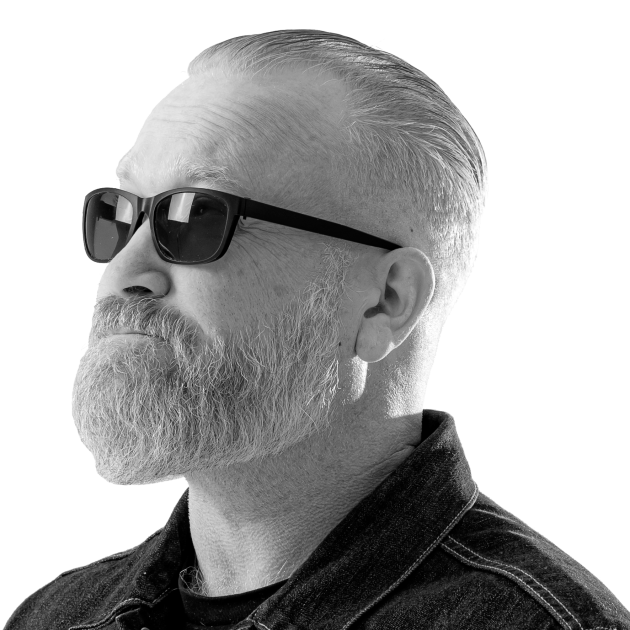
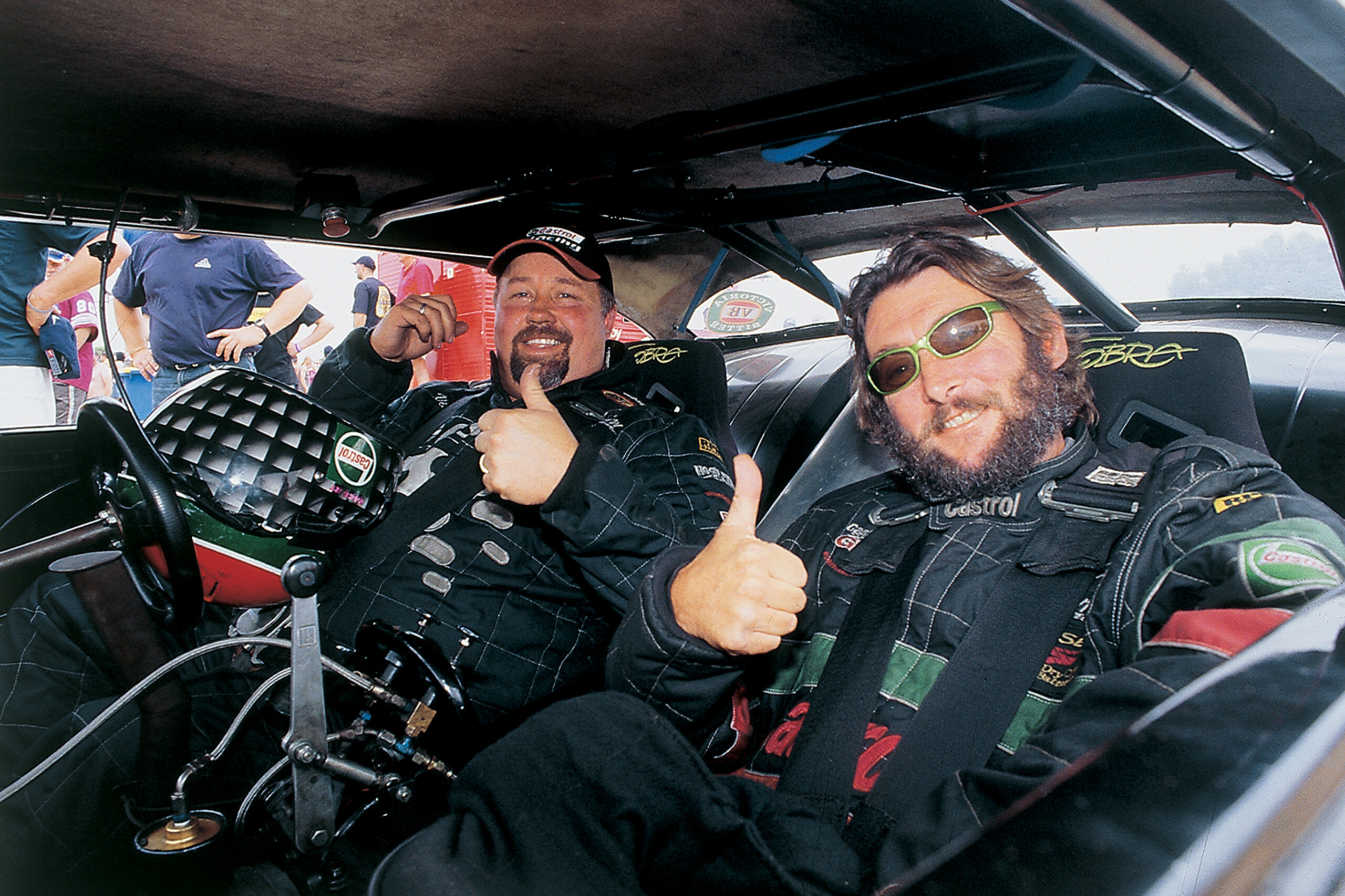
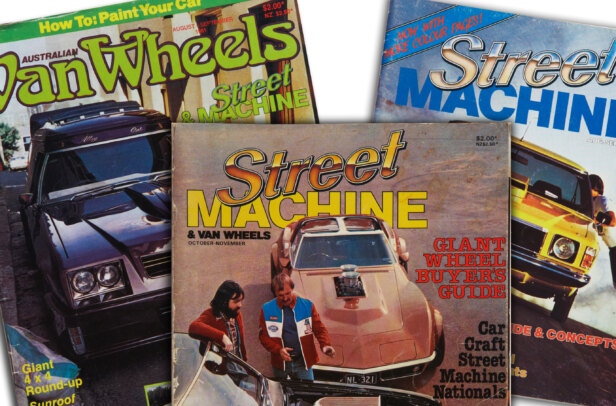
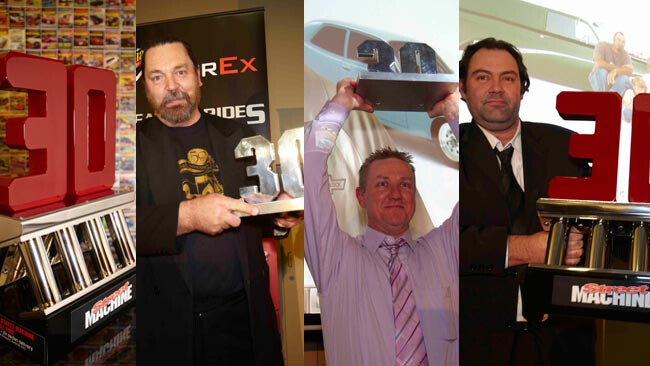
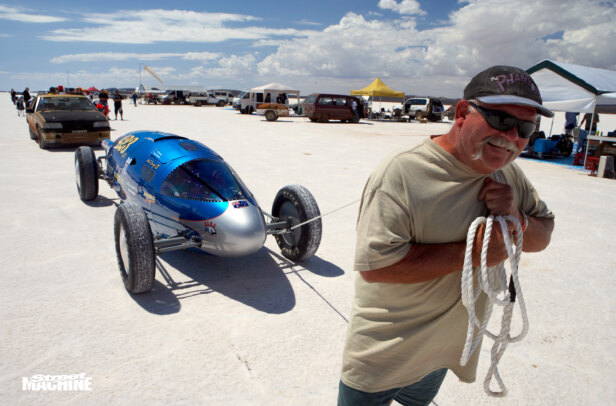
Comments